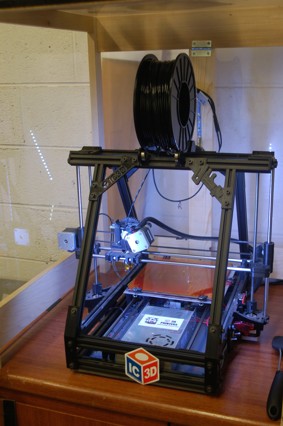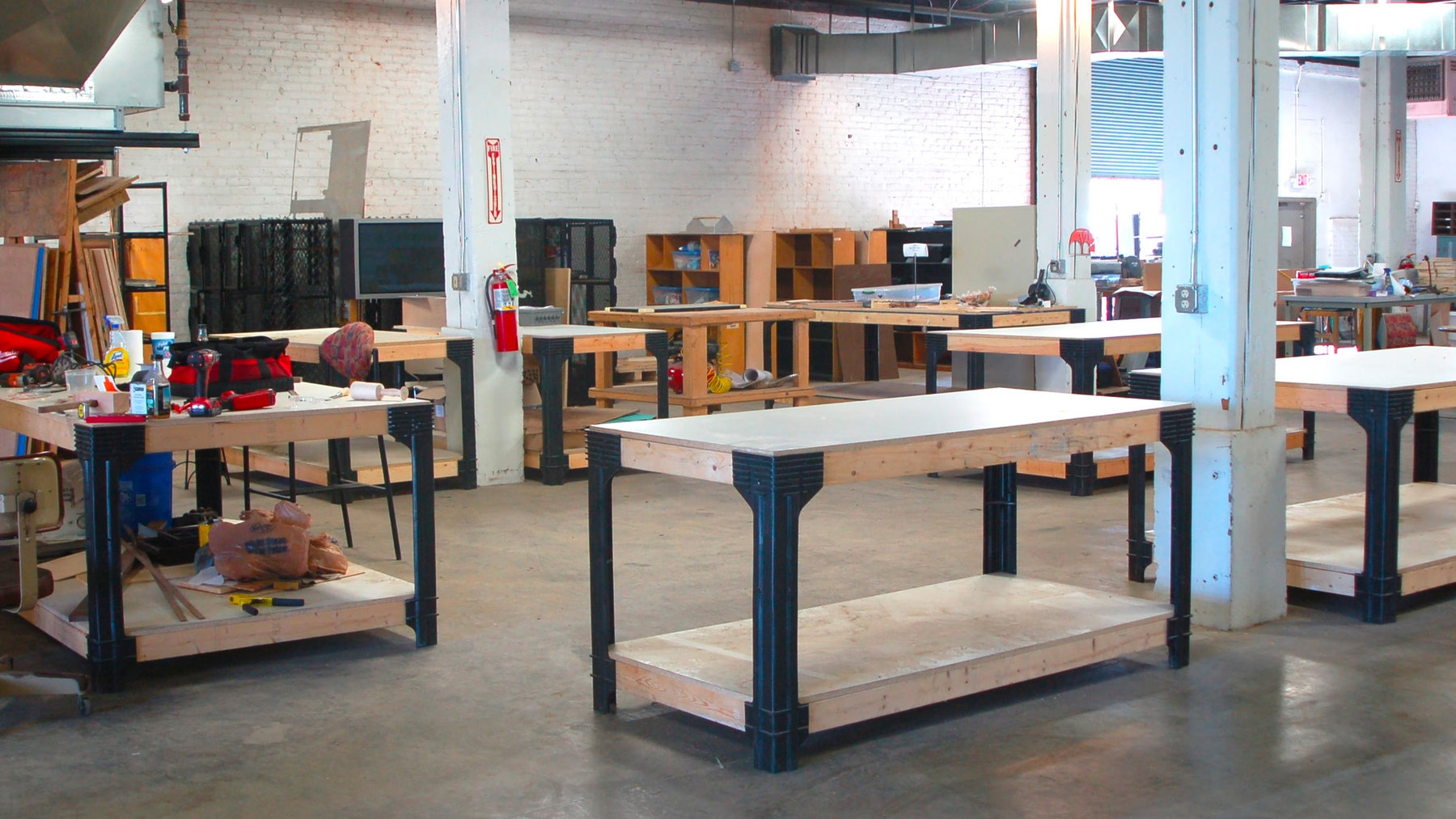Here, I want to step back from the reporting we’ve done on this from various American cities and share some of what was said about this maker movement by people who know it well and whom I heard speak a week or so ago in Boulder, Colorado, at an unusual week-long conference held there annually, the Conference on World Affairs, which I previously discussed here and here.
Two different panels addressed the maker movement. (I use that term because it’s been widely adopted and I don’t have a better one.) That adds up to almost three hours of commentary, questions, answers, and discussion. It’s both impossible and unnecessary in this space to convey all of what was said, so I will distill and conflate from the two panels what I found to be the most interesting lines of comment, and organize it here into three categories: (1) the development of this area of the economy; (2) some informed speculation about where this is heading; and (3) some of the intriguing challenges and dilemmas all this will increasingly pose in the years to come.
Development of This Part of the Economy
Jules Pieri, the cofounder and CEO of the product-launch platform The Grommet, noted that what’s so remarkable about the maker movement (words, she says, we wouldn’t have used even a few years ago) is that the tools to create enterprises—and especially physical products—have become accessible to just about anyone. And that’s changing how companies are getting formed.
Pieri offered her own experience as an example, noting that she started her career as an industrial designer for tech companies. Until very recently, industrial design often had to be done in the context of a large company, because the tools to do it were exclusively the territory of big companies. But that’s not the way it works any more. People can go right into creating an enterprise or product, all by themselves. She pointed to three important “enablers” of this sea-change.
The first is the availability of “hacker” or makerspaces. There are some 2,000 of them around the world, Pieri said. These places make expensive equipment (sometimes worth millions of dollars) like 3-D printers, laser cutters, and computerized machine tools available to anyone. “Even more importantly,” she said, “you get access to people who can show you how to use these things.” Pieri noted that the stylish iPhone and iPad DODOcase (which Jim Fallows wrote about in his article) was created in a makerspace. So was the little dongle for Square, the credit-card-processing and payment system. And she went on to list many, many other familiar products.
The third enabler is local retailers, which she called “the lifeblood of the maker movement” because local stores are where makers “get their sea legs.” She explained: “You can’t go from zero to 60 with a huge retailer like Best Buy or Home Depot. Those companies expect their suppliers to be their bankers. They don’t pay you for a very long time. So, ‘makers’ need local retailers first before they can be ready for the big leagues.” Others commented that websites like Etsy are also important avenues for makers to build awareness of their products and grow a client base. (For one such example, see this piece about Moop, a bespoke-bag startup in Pittsburgh.)
And lest anyone think that these various startup products can’t really amount to much of a stimulative boost to the economy, Pieri noted that once one of these maker products gets launched, there’s a ripple effect as the new company needs all kinds of help—logistics and packaging and marketing and financial and legal services.
3-D Printing as the Great Disruptor: What’s Coming Next?
3-D printers have come up several times now. Will O’Brien, a serial tech entrepreneur and cofounder of BitGo, noted that the onset of the maker movement really started at about the same time 3-D printing was taking on a new cast. “The original patents were expiring, and the technology was getting smaller and less expensive. So, you now have a 3-D printer the size of a desktop [computer] instead of the size of a refrigerator, and instead of costing hundreds of thousands of dollars, now costing only two or three thousand.”

Mentioning MakerBot and FormLabs, companies that manufacture desktop 3-D printers, O’Brien called 3-D printing a whole new industry, consisting of huge companies doing large-scale industrial printing and small startups making 3-D printers for home use. Excitedly explaining how this 3-D printing ecosystem is evolving, O’Brien pointed to a company that can take a kid’s drawing from a morning at nursery school, turn it into something 3-D printable, so the kid can have a tangible creature of his own design on the shelf in his bedroom. (I believe he’s referring to Kids Creation Station.) Echoing O’Brien’s excitement, Pieri said that when she first encountered a 3-D printer, “seeing it just blew my head off” with amazement. And that technology, perhaps more than any other, has spurred dramatic developments in American manufacturing.
Both of the CWA panels on the maker movement included Jamais Cascio, a “futurist” who writes about the intersection of emerging technologies and cultural transformation. His perspective in these discussions proved valuable. He noted that while 3-D printing is fascinating and important, it’s really just the latest “gadget iteration” that is awing us with its powers. It will be replaced, he said, by something else new and powerful.
“We think of 3-D printers making ‘hard’ objects [consumables, such as a case for an iPhone or iPad]. But we also have 3-D printers now that can print out human organs.” Cascio looked out at the audience, consisting largely of older people. “We have people walking around now—perhaps people right here in this very room—who have 3-D-printed knees.” Soon, he said, there’ll be 3-D-printed hearts … and 3-D-printed food. So, with this move into synthetic biology, we’re talking about making life. That’s consistent, he said, with what we know about the history of “making” over time: “What’s obvious is that we are becoming more powerful … We’re acquiring the ability to reshape the world.” What do we want to do with that ability? Control ecosystems? Bring back species that we drove into distinction?
Cascio invoked Stewart Brand, one of Ken Kesey’s “merry pranksters,” who is probably best known for being the editor of the Whole Earth Catalog. Brand’s first line in the first issue of that publication in 1968 was: “We are as gods and might as well get good at it”—a paraphrase of something British anthropologist Edmund Leach wrote. As Cascio observed, that observation “was arrogant at the time, but now we are getting the capacity to make the world in ways that previously was reserved to the deity. What we haven’t been developing as swiftly is the wisdom to know what to make and what not to make. And that will be one of our primary challenges in the next couple of decades.”
To Cascio, this dramatic shift in industrial manufacturing is more about anthropology and cultural change than about economics. “It is a moment of transformation between an older and a newer system. These moments of transformation end up being very fragile. The older system is losing reliability, losing flexibility. But the newer system has yet to be become as powerful and dominant as the old system once was. So you have a moment of fragility that becomes easily broken by people who haven’t thought through their actions or people who have thought it through and want to break things, to cause harm.”
Early next week, I’ll cover the third (and in many ways most interesting) category of commentary—some of the intriguing challenges and dilemmas (educational, legal, moral, and ethical) all this will increasingly pose in the years to come. Meanwhile, if you’re eager to jump ahead or want to hear these CWA panel discussions for yourself, audio recordings are available here (for “Makers: The Movement that Captures the Imagination”) and here (for “Market Disrupters: Makers, Shakers, and Sharers”).




